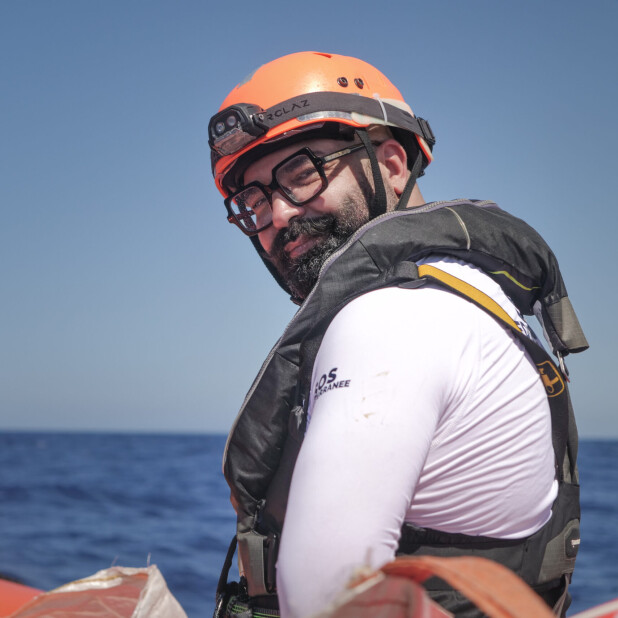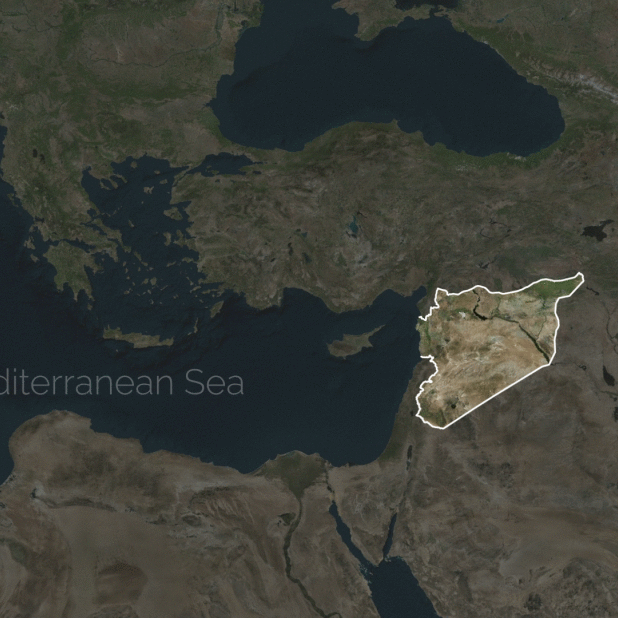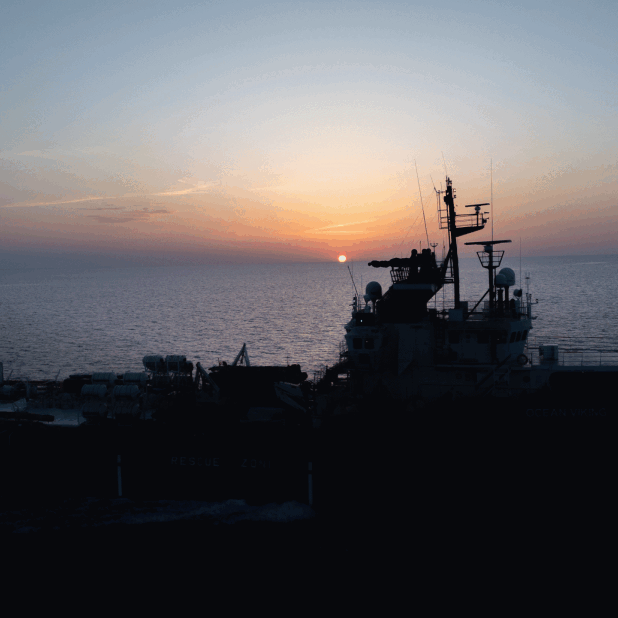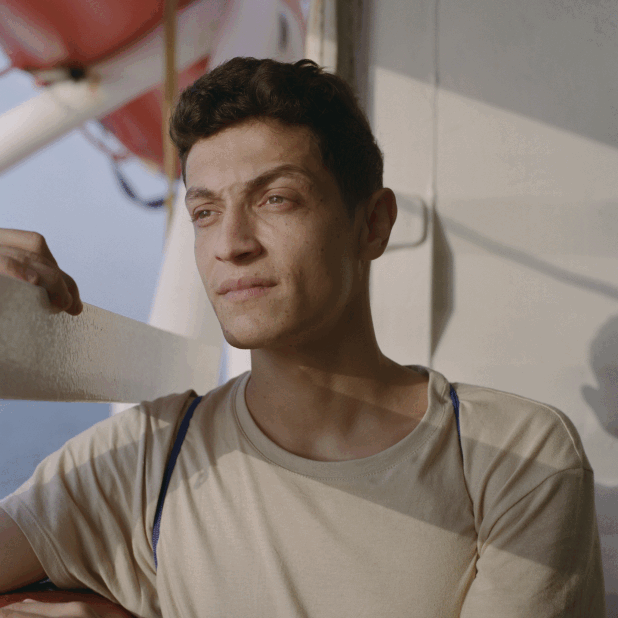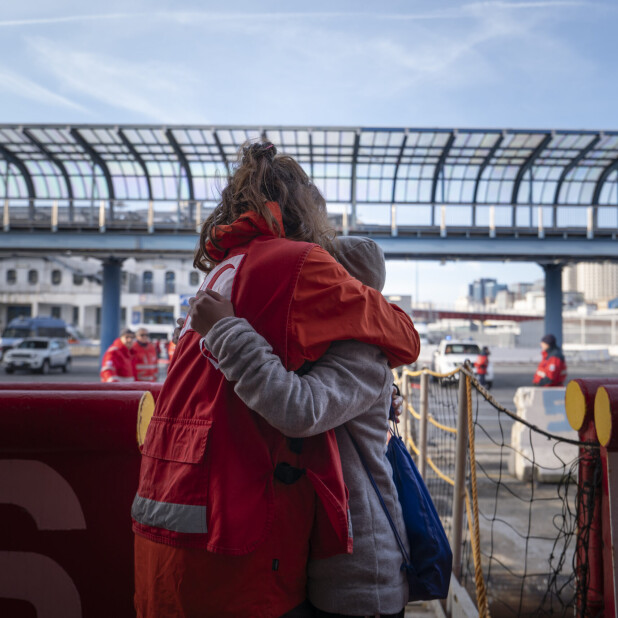
After having disembarked 236 survivors in Augusta, Sicily, at the beginning of May, the Ocean Viking arrived in a shipyard in Naples on May 25. The ship will undergo mandatory regular maintenance work before going back to sea. Stéphane, maritime manager for SOS MEDITERRANEE, tells us more about it.
Stéphane, a former merchant marine officer, joined SOS MEDITERRANEE in 2016 as a rescuer. He became involved right at the beginning of operations with the Aquarius, the first ship operated by SOS MEDITERRANEE, because he found it abnormal “to be able to travel freely with a passport, while others were risking death to have a better life”. Stéphane is now the Maritime Manager in the SOS MEDITERRANEE operations department. He coordinates the works and maintenance to be done on the Ocean Viking in collaboration with the ship owner. He explains to us why the Ocean Viking is going into dry dock.

The Ocean Viking is about to enter dry dock. What does that entail?
Going into dry dock means taking a ship completely out of the water. With a length of nearly 70 meters and a width of more than 15 meters, the Ocean Viking weighs several hundred tons. Dry-docking is therefore a delicate operation that can only be carried out in shipyards that have a graving dock, i.e. a basin that can be closed and emptied thanks to a door system similar to a lock. The ship must be laid on her blocks (= series of wooden pieces on which the keel of a ship rests), in accordance with her blocking plan (= laying plan for putting a ship on dry dock) which was drawn up at the end of her construction, and which is specific to the Ocean Viking’s hull.
Our stop in the dry dock will take between six and eight days depending on weather conditions, including one day to take the ship out of the water and one day to put it back on the water. The purpose of the dry dock is to check everything below the waterline of the ship. First the hull must be sandblasted, meaning that the paint must be removed, to control the thickness of the hull with a laser system. The general condition of the ship’s propeller must also be checked, as well as its connections and the sealing system of the propeller shaft. Anchors should be placed on the ground and the chains unrolled to be checked. The Bow thruster must also be examined as well as all the seawater inlet and outlet valves. Finally, the hull must be completely repainted and a coat of antifouling (paint containing biocides to prevent aquatic organisms from attaching themselves to the ship’s hull) must be added so that the ship can be refloated.
In the meantime, we will take advantage of the dry dock to carry out additional work to improve the reception conditions for survivors onboard.

What improvements will be made to the Ocean Viking?
The elevated wooden deck, located between the men’s Shelter and the clinic, and allowing the reception of survivors in a drier environment than the ship’s deck itself, needs to be replaced and improved to be more durable and comfortable. It will be a few centimetres higher than the previous deck and will allow for better drainage of water (sea/rain). Ventilation openings will be added to the starboard side containers which usually contain equipment but can be opened to Shelter survivors if additional space is needed.
Three winches placed on board the Ocean Viking before the vessel was chartered by SOS MEDITERRANEE will be disembarked to save space on the Main deck. A waste compactor will also be installed to reduce our waste volume and to optimise space on board.
Finally, the containers that we added to the deck of the Ocean Viking in June 2019 to serve as a Shelter and medical module for the survivors require regular maintenance. We will therefore also take advantage of this shipyard to keep them in good general condition: sanding, rust removal, painting.
All this work to improve the reception of people rescued at sea is currently more complex than usual since the supply chain of materials is disrupted globally due to COVID-19. However, our team is doing everything possible to complete the work as quickly as possible so that we can get back to sea as soon as possible, as there is an ongoing emergency.
The Central Mediterranean is the world’s deadliest migratory sea route. Whenever the weather permits, people flee Libya in unseaworthy boats, whether or not there are search and rescue vessels in International waters off the coast. Rescuing them is both a legal and moral obligation. Since the beginning of the year, more than 630 people have died in the Central Mediterranean, according to information collected by the International Organization for Migration, not counting the people who disappeared without a trace.
Why is this work being carried out now on the Ocean Viking?
Dry-docking a vessel is a legal requirement common to all commercial vessels. It must be done every 5 years and falls under the responsibility of the ship owner. The work will be controlled by the classification society of the Ocean Viking, which, once the work is completed, will renew all the ship’s certificates. The dry-docking could not be carried out during the administrative detention phase of the ship from July to December 2020 for logistical reasons. Last autumn, we focused exclusively on the work that would allow us to lift the administrative detention of the Ocean Viking as soon as possible and resume our mission (Editor’s note: since January 2021, the Ocean Viking has conducted three rotations at sea and rescued 1148 people). It is rare for a ship to enter the shipyard twice in six months but the administrative blockages we have experienced have forced us to carry out these works separately.

Cover Photo: Mathieu Oriot / SOS MEDITERRANEE

